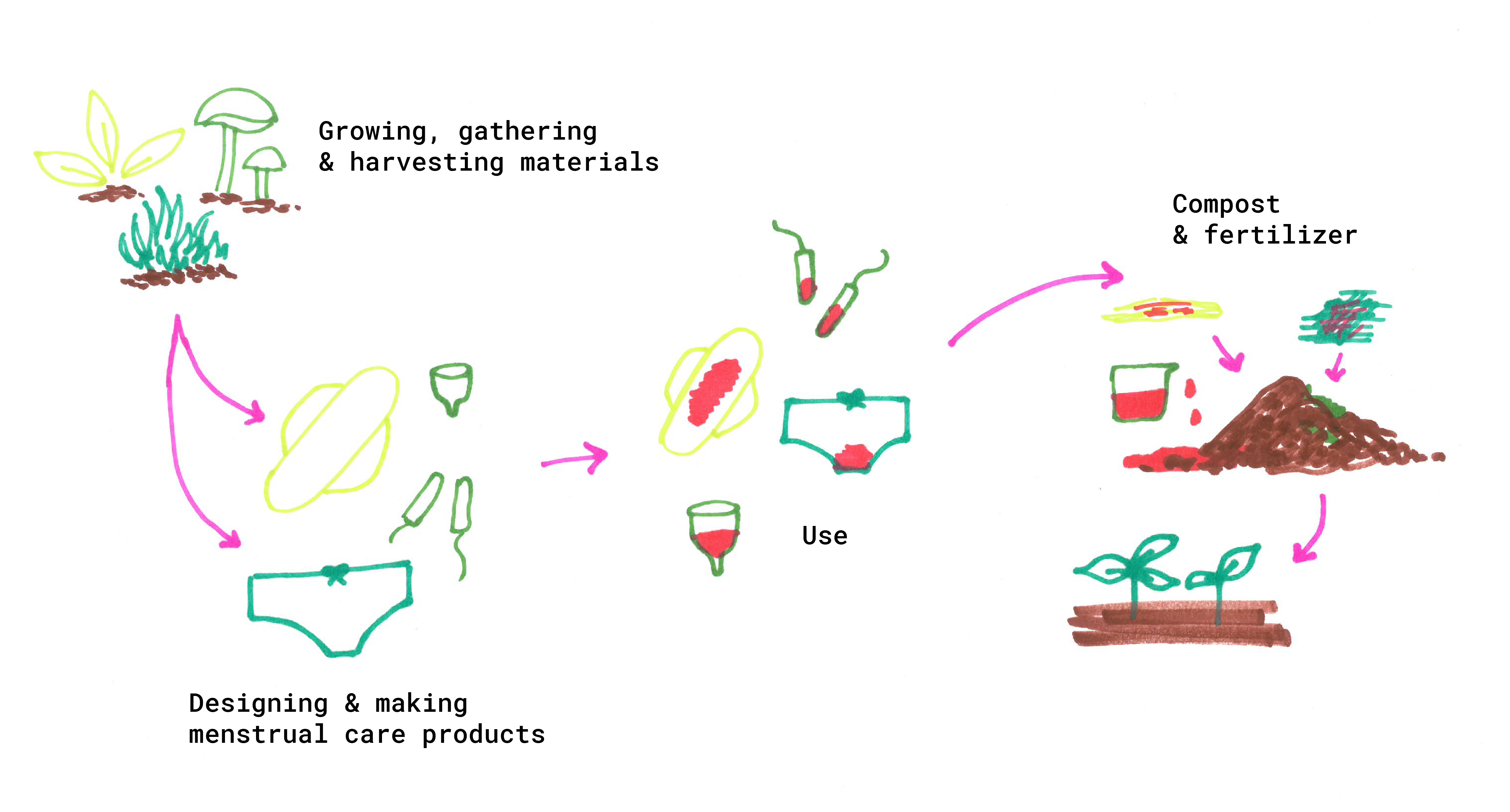From biomaterials to compost

When mapping out the design space of this project I found it easier to define a few stages or steps in the lifecycle of imagined sustainable menstrual products. Our designs will address one or several stages of this process.
-
The process begins with the growth, gathering or harvesting of biomaterials, coming from plants, fungi, or other micro or nano structures. This stage might involve foraging for these materials in the forest, or growing them in a lab or at home. In this stage, designs might aid in this foraging, or the growing and nurturing of the living organisms.
-
The second stage involves turning these biomaterials into menstrual care artifacts or products, such as pads, tampons, wearable garments… or other objects that might support the menstrual cycle. Here designs could help menstruators fabricate their own products with biomaterials, or could speculate on how these products might look if fully organic.
-
The third phase is the use of the products during the bleeding phase of the menstrual cycle. Here our designs might aid in collecting or analyzing menstrual blood, understanding its components in terms of the body’s health and in terms of what contents might be nutritious for other species.
-
The final stage involves ‘disposing of’ the menstrual care products, either shredding or mixing the leftover organic materials with soil or compost, or diluting the blood with water or other nutritional components to be delivered as fertilizer for plants, or for the organic materials in the first stage. Here we could even imagine a cyclical process.